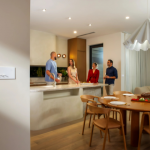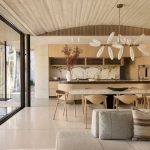Inverters Explained
When planning a photovoltaic system, two terms come up most frequently: solar modules and inverters. The role of the solar module is clear to most people, but many still ask: what is an inverter?
The inverter is the heart and brain of the PV system. It converts direct current electricity into alternating current electricity and is what makes the energy generated by the PV system usable.

GALLERY
It monitors the performance of the solar modules, important grid parameters and values, thus ensuring high yields and the safety of the PV system. The inverters created by Fronius are ideal companions for smart homes, with a backup power function that allows for self-sufficiency even in the event of a blackout. Manufactured to the highest levels of environmental awareness and accountability, Fronius embodies sustainability in its inverters.
A Current is not Always a Current
A PV system can provide an independent source of renewable energy with solar modules generating electricity from the energy radiated by the sun. But this electricity cannot be used in the household right away, as it’s in the form of direct current, whereas most household appliances and the grids use alternating current. An inverter converts the direct current into alternating current, only then can the energy from the sun be used, or fed it into the grid.
The inverter is usually installed in a cellar or a garage, where it doesn’t take up too much space. On average, it’s about the same size as a medicine cabinet, with the appropriate power category for the inverter depending on the size of the photovoltaic system.

Yield and Safety
Because of its main functions, the inverter is known as the ‘heart and brain’ of the PV system:
- Making Current Usable Converting direct current into alternating current for use in the home.
- Optimising System Output Monitoring the current and voltage values of the solar modules to ensure they’re always delivering the best possible output.
- Guaranteeing Safe Operation The inverter is also an important factor in the safety of the system. For example, it contains a cooling feature that prevents the system from overheating. It also controls the frequency of the grid and reduces the output as required. In a worst-case scenario, the inverter can also disconnect the system from the grid.
- Increasing Self-Consumption Electricity from a roof is cheaper than electricity from the grid. A smart inverter will therefore ensure that as much as possible of the solar power that the system generates is usable.
- Backup Power Supply Solar power can only be generated, used and, in combination with a battery, stored – even in the event of a blackout – if an inverter features backup power functionality.

Intelligent Energy Management
Feed-in tariffs are falling all the time, which is why it’s a good move to utilise as much self-generated electricity as possible. It therefore makes sense to choose an inverter that provides the highest levels of intelligent energy management. When used with a Fronius Smart Meter, Fronius inverters keeps tabs on electricity consumption very easily. Fronius inverters can control electrical loads in the household to ensure that the solar power is used efficiently.
There are serious differences in how inverters are made that affect factors such as sustainability and environmental protection. Fronius products are manufactured in Austria using minerals from conflict-free zones and energy generated by Fronius’ own photovoltaic systems. With a module area of 7000 m², the system on the roof of the production hall in Sattledt is one of the largest in Austria and could provide enough electricity for 250 households. Fronius treats sustainability as a lived reality, not just a cliché.

For more information about the potential of inverters in a PV system, visit Fronius
The Clipsal Solis™ Collection is a premium range of switches and power points that blend smart technology, sustainability, ...
For centuries, architecture has evolved in layers, with new structures built atop the old. While modern urban planning ...
Solar Victoria continues to enforce industry standards for consumers purchasing energy-efficient hot water systems under its flagship Solar ...
Modern minimalism meets contemporary luxury inside Unox Casa’s latest Exclusive Project in Malvern, Australia - a refined residence ...
In the rapidly growing Nanshan District of Shenzhen, China, architecture studio Büro Ole Scheeren has revealed its latest ...












